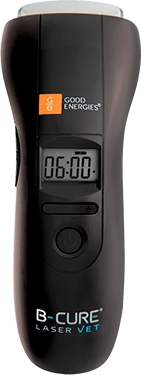Shedding Light on Hip Dysplasia: How Cold Laser Therapy Devices are Changing the Game for Dogs
Hip dysplasia is a common condition in dogs that can cause severe pain and reduced mobility. Traditional treatment methods involve surgery and medication, but there is now an alternative non-invasive approach with the use of cold laser therapy devices. In this article, we will explore the benefits of cold laser therapy devices in treating hip dysplasia in dogs, as well as their effectiveness in relieving pain and improving mobility.
Understanding Hip Dysplasia in Dogs
Hip dysplasia is a genetic condition that affects the hip joint. It is caused by a malformation of the hip socket, which can lead to the development of arthritis in the hip joint. The condition is most commonly seen in larger breeds such as German Shepherds, Great Danes, and Labrador Retrievers.
The symptoms of hip dysplasia in dogs include difficulty standing up or lying down, reluctance to jump or climb stairs, lameness or limping, and a decrease in activity level. As the condition progresses, it can lead to chronic pain, muscle wasting, and reduced quality of life for the affected dog.
Traditional Treatment Methods for Hip Dysplasia
The traditional treatment methods for hip dysplasia in dogs involve surgical intervention or medication. Surgery is typically recommended for severe cases and involves the replacement of the hip joint with an artificial joint. While this approach can provide significant relief for dogs with hip dysplasia, it is also expensive and can be risky for older dogs.
Medication is another option for treating hip dysplasia in dogs, with non-steroidal anti-inflammatory drugs (NSAIDs) being the most commonly prescribed medication. While these medications can provide pain relief, they can also have side effects such as upset stomach and liver damage with prolonged use.
Cold Laser Therapy Devices for Hip Dysplasia in Dogs
Cold laser therapy devices offer a non-invasive, drug-free approach to treating hip dysplasia in dogs. These devices use low-level laser therapy (LLLT) to penetrate the skin and stimulate cellular activity in the affected area. The laser light causes a series of physiological reactions in the cells, which can lead to pain relief and improved healing.
One of the most popular cold laser therapy devices for treating hip dysplasia in dogs is the B-Cure Laser Vet. This device is a portable and easy-to-use laser therapy device that emits a safe and low-level laser beam to stimulate the natural healing processes in the affected area. The device can be used by pet owners at home, or by veterinarians in a clinical setting.
Benefits of Cold Laser Therapy for Hip Dysplasia in Dogs
There are many benefits to using cold laser therapy devices for the treatment of hip dysplasia in dogs. Here are some of the most notable:
- Non-invasive: Cold laser therapy devices are a non-invasive treatment option for hip dysplasia in dogs. There is no need for surgery, which can be risky and expensive for older dogs.
- Pain relief: Cold laser therapy devices can provide pain relief for dogs with hip dysplasia. The laser light stimulates the release of endorphins, which are natural painkillers in the body.
- Improved mobility: Cold laser therapy devices can improve mobility in dogs with hip dysplasia. The laser light stimulates the production of collagen, which can help to repair damaged tissue and improve joint function.
- No side effects: Cold laser therapy devices have no known side effects, making them a safe and effective treatment option for hip dysplasia in dogs.
- Easy to use: Cold laser therapy devices like the B-Cure Laser Vet are portable and easy to use. They can be used by pet owners at home, reducing the need for frequent veterinary visits.
Effectiveness of Cold Laser Therapy Devices for Hip Dysplasia in Dogs
The effectiveness of cold laser therapy devices for hip dysplasia in dogs has been widely studied and reported in various research studies. Cold laser therapy, also known as low-level laser therapy (LLLT), uses a non-invasive laser to stimulate cellular repair, increase blood flow, and reduce inflammation and pain. This makes it an effective treatment option for various conditions, including hip dysplasia in dogs.
Arthritis in Dogs Hip: A Common Condition
Hip dysplasia is a common condition in dogs, especially in larger breeds. It is a genetic condition that affects the development of the hip joint, causing it to develop abnormally. The resulting joint instability and inflammation can lead to arthritis, pain, and decreased mobility. Traditional treatments for hip dysplasia in dogs include pain medication, weight management, and surgery in severe cases.
BCure Laser: A Leading Cold Laser Therapy Device for Dogs
One of the leading cold laser therapy devices for dogs is the BCure Laser Vet device. This device is designed specifically for veterinary use and has been proven effective in treating various conditions, including hip dysplasia in dogs.
The BCure Laser Vet device uses a combination of red and infrared light to penetrate deep into the affected tissues, stimulating cellular repair and reducing inflammation and pain. It is a portable, lightweight device that is easy to use and can be used in the comfort of the dog’s own home. The device is also FDA-approved for veterinary use, ensuring its safety and effectiveness.
Final Thoughts
Hip dysplasia is a common condition in dogs that can lead to arthritis, pain, and decreased mobility. Cold laser therapy devices, such as the BCure Laser Vet device, are a safe and effective treatment option for hip dysplasia in dogs, providing a non-invasive, drug-free alternative to traditional treatments. The effectiveness of cold laser therapy devices for hip dysplasia in dogs has been widely studied and reported in various research studies, making it a viable option for pet owners looking to provide their dogs with effective and comprehensive care.




